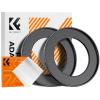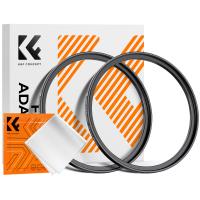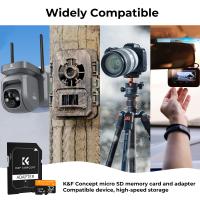How To Use Bluetooth Headphones With Tv?
In today's fast-paced world, technology continues to evolve, making our lives more convenient and enjoyable. One such advancement is the ability to use Bluetooth headphones with your TV. This feature allows you to enjoy your favorite shows, movies, and games without disturbing others around you. Whether you're a night owl who doesn't want to wake up the household or someone who simply prefers the immersive experience of personal audio, Bluetooth headphones can be a game-changer. In this article, we'll explore the various methods to connect Bluetooth headphones to your TV, troubleshoot common issues, and provide tips for an optimal experience.
Understanding Bluetooth Technology

Before diving into the specifics, it's essential to understand what Bluetooth technology is and how it works. Bluetooth is a wireless communication technology that allows devices to exchange data over short distances using radio waves. It is commonly used for connecting peripherals like headphones, keyboards, and mice to computers, smartphones, and other devices.
Checking TV Compatibility
The first step in using Bluetooth headphones with your TV is to check if your TV supports Bluetooth connectivity. Most modern smart TVs come with built-in Bluetooth, but older models may not. To check if your TV has Bluetooth capabilities, you can:
1. Consult the User Manual: The user manual or the TV's specifications sheet will usually indicate if Bluetooth is supported.
2. Check the Settings Menu: Navigate to the settings menu on your TV and look for a Bluetooth option under the audio or connectivity settings.
3. Visit the Manufacturer's Website: If you're still unsure, visit the manufacturer's website and search for your TV model to find detailed specifications.
Connecting Bluetooth Headphones to a Bluetooth-Enabled TV
If your TV supports Bluetooth, follow these steps to connect your Bluetooth headphones:
1. Put Your Headphones in Pairing Mode: Refer to the user manual of your Bluetooth headphones to put them in pairing mode. This usually involves holding down a button until an LED light starts flashing.
2. Navigate to the Bluetooth Settings on Your TV: Using your TV remote, go to the settings menu and find the Bluetooth option. This is often located under the audio or connectivity settings.
3. Search for Devices: Select the option to search for Bluetooth devices. Your TV will start scanning for nearby Bluetooth devices.
4. Select Your Headphones: Once your headphones appear on the list of available devices, select them to initiate the pairing process.
5. Confirm the Connection: You may need to confirm the connection on both your TV and headphones. Once connected, you should hear the TV audio through your headphones.
Using a Bluetooth Transmitter for Non-Bluetooth TVs
If your TV does not have built-in Bluetooth, you can still use Bluetooth headphones by employing a Bluetooth transmitter. A Bluetooth transmitter is a small device that plugs into your TV's audio output and transmits the audio signal wirelessly to your Bluetooth headphones. Here's how to set it up:
1. Purchase a Bluetooth Transmitter: Ensure that the transmitter is compatible with your TV's audio output (e.g., 3.5mm jack, RCA, or optical).
2. Connect the Transmitter to Your TV: Plug the transmitter into the appropriate audio output on your TV.
3. Power On the Transmitter: Some transmitters are battery-powered, while others require a USB power source. Make sure the transmitter is powered on.
4. Put the Transmitter in Pairing Mode: Follow the instructions provided with the transmitter to put it in pairing mode.
5. Pair Your Headphones with the Transmitter: Put your Bluetooth headphones in pairing mode and wait for them to connect to the transmitter. Once connected, you should hear the TV audio through your headphones.
Troubleshooting Common Issues
While connecting Bluetooth headphones to your TV is generally straightforward, you may encounter some common issues. Here are a few troubleshooting tips:
1. No Sound: If you don't hear any sound, ensure that the volume on both your TV and headphones is turned up. Also, check that the headphones are properly paired and connected.
2. Audio Lag: Bluetooth audio can sometimes experience a delay, causing the audio to be out of sync with the video. To minimize lag, look for low-latency Bluetooth headphones or transmitters that support aptX Low Latency.
3. Interference: Other wireless devices in your home can interfere with the Bluetooth signal. Try turning off other devices or moving closer to the TV to improve the connection.
4. Connection Drops: If the connection between your headphones and TV keeps dropping, ensure that both devices are within the recommended range (usually around 30 feet). Also, make sure there are no physical obstructions between the devices.
Tips for an Optimal Experience
To get the most out of your Bluetooth headphones and TV setup, consider the following tips:
1. Choose Quality Headphones: Invest in high-quality Bluetooth headphones with good sound quality and comfort. Over-ear headphones are generally more comfortable for extended use.
2. Keep Firmware Updated: Ensure that both your TV and headphones have the latest firmware updates. Manufacturers often release updates to improve compatibility and performance.
3. Use a Dedicated Bluetooth Transmitter: If you experience frequent audio lag or connection issues, consider using a dedicated Bluetooth transmitter designed for low-latency audio.
4. Adjust Audio Settings: Some TVs have audio settings that can be adjusted to improve the Bluetooth audio experience. Experiment with these settings to find the best configuration for your setup.
Using Bluetooth headphones with your TV can significantly enhance your viewing experience by providing high-quality, private audio. Whether your TV has built-in Bluetooth or requires a Bluetooth transmitter, the process of connecting your headphones is relatively simple. By following the steps outlined in this article and troubleshooting any issues that arise, you can enjoy your favorite content without disturbing others. Remember to invest in quality headphones and keep your devices updated for the best possible experience. Happy viewing!







































